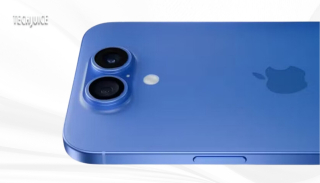“It’s been 3 years since YouTube got banned in Pakistan”
“3 years, 4 months, and 2 days”
On the 1st of July, 2012, a video was uploaded on YouTube, the internet’s darling and the most popular video-sharing site on the planet, titled “The Real Life of Muhammad”, followed by another video “Muhammad Movie Trailer” the next day. Uploaded by the name of Sam Bacile, these two videos were a part of a highly controversial movie called “Innocence of the Muslims”. Produced by a convicted fraudster, Nakoula Basseley Nakoula, with a very low budget, a lot of suspicious cutting and dubbing, the film was soon to have an incredibly big impact around the world.
In September, 2012, the video gets picked up by the international media after being translated into Arabic, provoking widespread protests by Muslims around the globe. U.S embassies in numerous Muslims countries are attacked and YouTube ends up blocking the video in a number of Muslims countries, but refuses to remove the particular video from YouTube for Pakistani users saying that the video is completely within their guidelines.
On the 17th of September, 2012, YouTube is blocked in Pakistan by PTA on the order of Prime Minister Raja Pervez Ashraf. The website would remain blocked until and unless the video is removed. On this day, starts the three years of YouTube ban, giving birth to a number of local Pakistani video sharing platforms. Despite the ban, most of the Pakistani users continue to use YouTube with the help of VPNs, Proxy Servers, etc.
In October, 2012, YouTube still remains banned and Google cites the absence of any form of agreement with the Pakistani Government as a reason for not complying with their video-removal requests. The stand-off continues as PTA, under the order of Iftikhar Muhammad Chaudhry, Chief Justice of Pakistan, refuses to budge until and unless the video is removed, even going as far as to say that if the video isn’t removed, the ban would continue indefinitely.
In November, 2012, two months after the ban, a number of Pakistani individuals including activists, pop-stars and politicians start protesting against the ban, asking for a proper placement of Cyber Laws inside the country to deal with such a situation.
On the 28th of December, 2012, Rehman Malik announces in a tweet that YouTube access would be re-opened within 24 hours, and ISPs are ordered to unblock/restore complete access to the site but barely hours after the announcement by Rehman Malik, the Prime Minister again orders to block YouTube access.
In February, 2013, the deadlock between the Pakistani authorities and the Google-owned video sharing site remains in place as Google keeps refusing to remove the video. The talks fail, leading to no viable solution and leaves Pakistani users of YouTube to either look for other video-alternatives or resort to VPNs or Proxy servers to access the site.
On the 7th of March, 2013, Naveed Qamar, the federal defence minister announces that the Government will open the access to YouTube in Pakistan before dissolution of assemblies, or within 2 weeks.
In April, 2013, a month or so after the previous announcement to open YouTube with-in 2 weeks, the new interim set-up orders to continue ban on YouTube until removal of the controversial video, again bringing the process of opening access to the site to square one.
In May, 2013, a lawyer challenges the YouTube ban in the Peshawar High Court, but to no results.
In July, 2013, the Lahore High Court directs the authorities to explore technological plans to block certain blasphemous videos on YouTube as a solution to not blocking the whole website. Soon after, plans are unveiled by the government to remove the ban after Eid.
In August, 2013, new URL-filters are tested to block certain URLs instead of the whole website. The new testing by blocking 4000 URLs hints that YouTube might be opened soon.
In December, 2013, Google finally agrees to launch a localized version of YouTube in Pakistan, also agreeing to work with the respective authorities to block access to blasphemous content for the Pakistani users. Through the new localization strategy, Google could easily block access to any content deemed blasphemous to the Pakistani audience without breaking its own laws of freedom of speech.
In February, 2014, Google finally gives in to a US court order and removes the movie “Innocence of Muslims” from YouTube.
In March, 2014, even after the removal of the controversial film, the Pakistani government remains unsure as to whether to unblock YouTube or not, owing to the fact that Google is planning to challenge the earlier court decision.
In May, 2014, the National Assembly passes a bare-bones resolution to open YouTube access in Pakistan.
In February, 2015, after years of trying, Anusha Rehman, the Minister of State for Information Technology and Telecom, announces that it is not possible to fully block the objectionable material available on YouTube.
In September, 2015, the Senate body made efforts to seek a legislation for lifting the ban on YouTube.
In December, 2015, YouTube starts opening for most PTCL users and it remains functioning for quite a while, but this brief instance is cited only as a glitch in the blocking system.
On the 12th of January, 2015, Google finally introduces a localized version for Pakistan along with several other countries, paving the way for the removal of the ban.
On the 17th of January, 2015, PTA files a petition in the Supreme Court, seeking the reversal of the ban on YouTube and citing the reason that since YouTube has now its own local version without any controversial material, the ban wasn’t needed anymore.












